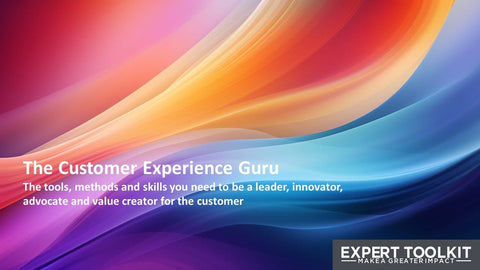To become a graphic guru, master essential design skills and stay updated with industry trends. Practice consistently to refine your craft.
Graphic design is a dynamic field that combines creativity and technical expertise. Aspiring designers should focus on mastering tools like Adobe Creative Suite, understanding design principles, and developing a keen eye for aesthetics. Staying updated with the latest industry trends is crucial for remaining relevant.
Regular practice and seeking constructive feedback can significantly enhance your skills. Networking with other professionals and learning from their experiences can also be beneficial. By dedicating time to continuous learning and improvement, you can transform your passion for design into a successful career, ultimately becoming a sought-after graphic guru.
The Graphic Guru Journey
Becoming a Graphic Guru is an exciting and rewarding path. This journey involves mastering essential skills and embracing creativity. It requires dedication, practice, and a clear roadmap to success. Let’s explore the key steps to becoming a Graphic Guru.
Identifying Your Niche
First, identify your niche in the graphic design world. This will help you focus your skills and grow faster. Here are some common niches:
- Logo Design
- Web Design
- Branding
- Illustration
- Animation
Consider what excites you the most. Your passion will drive your success. Experiment with different styles and find your unique voice.
Setting Realistic Goals
Setting realistic goals is crucial in your Graphic Guru journey. Break down your goals into smaller, manageable tasks. Here’s a simple example:
| Goal | Task | Timeframe |
|---|---|---|
| Learn Adobe Photoshop | Complete basic tutorials | 2 weeks |
| Build a Portfolio | Create 5 sample projects | 1 month |
| Find First Client | Join freelance platforms | 3 months |
Track your progress regularly. Adjust your goals as you grow. Celebrate small victories along the way.
In your journey, stay curious and keep learning. The graphic design world is always evolving. Embrace new tools and trends to stay ahead.

Core Design Principles
Understanding core design principles is vital for any aspiring graphic guru. These principles form the foundation of every great design, helping create visually appealing and effective graphics. Master these fundamentals to elevate your designs to the next level.
Balance And Alignment
Balance and alignment are key to creating harmonious designs. Balanced designs make viewers feel comfortable and settled. There are two types of balance:
- Symmetrical Balance: Elements are evenly distributed on both sides.
- Asymmetrical Balance: Elements are uneven but still balanced.
Use alignment to ensure all elements have a visual connection. Proper alignment creates a clean, organized look. This makes your design easier to navigate.
Contrast And Color Theory
Contrast helps different elements stand out. It adds visual interest and guides the viewer’s attention. Use contrast in:
- Color: Use light and dark colors to create contrast.
- Size: Make important elements larger than others.
- Shape: Combine different shapes to create interest.
Understanding color theory is crucial. Use the color wheel to select harmonious color schemes. Complementary colors (opposite on the wheel) provide high contrast. Analogous colors (next to each other) create harmony.
Typography And Readability
Typography affects how your message is received. Choose fonts that are easy to read and match the tone of your design. Consider these factors:
- Font Size: Ensure text is large enough to read.
- Line Spacing: Provide enough space between lines for clarity.
- Font Pairing: Use two fonts for contrast and hierarchy.
Readability is crucial. Avoid using too many different fonts. Stick to a maximum of two or three. Ensure text color contrasts with the background for easy reading.
Mastering Design Software
To become a graphic guru, you need to master design software. Knowing how to use these tools will set you apart. This section covers the essentials for mastering design software.
Vector Vs. Raster Graphics
Graphics come in two main types: vector and raster. Understanding both is crucial.
| Vector Graphics | Raster Graphics |
|---|---|
| Scalable without losing quality | Pixel-based, can lose quality when scaled |
| Ideal for logos and icons | Best for photos and detailed images |
| Smaller file sizes | Larger file sizes |
Popular Graphic Design Tools
Several tools dominate the graphic design industry. Here are the most popular ones:
- Adobe Photoshop: Best for raster graphics and photo editing.
- Adobe Illustrator: Perfect for creating vector graphics.
- CorelDRAW: Another powerful vector graphic tool.
- Sketch: Ideal for web and mobile design.
- Inkscape: A free alternative for vector graphics.
Advanced Software Features
Mastering advanced features will elevate your design skills. Below are some important features to learn:
- Layers: Organize your design elements effectively.
- Pen Tool: Create precise paths and shapes.
- Masking: Control the visibility of parts of your design.
- Blending Modes: Combine layers in creative ways.
- Actions and Scripts: Automate repetitive tasks.
Knowing these features will save you time and enhance your designs.
Creative Process And Workflow
The creative process and workflow are key to becoming a graphic guru. These elements ensure that your designs are consistent and effective. Mastering them helps you deliver high-quality work on time. Let’s dive into how you can refine your creative process and workflow.
Developing A Design Process
Creating a solid design process involves several steps:
- Research: Understand the project requirements and gather inspiration.
- Brainstorming: Generate multiple ideas and concepts.
- Sketching: Create rough drafts of your ideas.
- Refinement: Develop your best sketches into detailed designs.
- Feedback: Share your designs with peers or clients for input.
- Finalization: Make necessary adjustments and finalize the design.
Each step is crucial for producing outstanding work. Stick to these steps to create consistent and high-quality designs.
Time Management For Designers
Managing your time is vital for meeting deadlines. Use these tips to stay on track:
- Set clear goals: Define what needs to be done.
- Prioritize tasks: Focus on the most important tasks first.
- Use a calendar: Schedule your tasks and stick to it.
- Avoid distractions: Minimize interruptions during work hours.
- Take breaks: Short breaks help maintain focus and creativity.
Effective time management ensures you meet deadlines without compromising quality.
Collaborating With Clients And Teams
Collaboration is essential for any successful design project. Here’s how to do it well:
| Tip | Description |
|---|---|
| Clear Communication: | Explain your ideas and listen to feedback. |
| Set Expectations: | Agree on goals, timelines, and deliverables. |
| Be Open-Minded: | Accept constructive criticism and be willing to adapt. |
| Use Collaboration Tools: | Tools like Slack, Trello, and Zoom can help. |
Effective collaboration leads to better designs and satisfied clients. It also helps build strong professional relationships.
Building A Strong Portfolio
Building a strong portfolio is vital for any aspiring graphic guru. Your portfolio showcases your skills and creativity. A well-crafted portfolio can open doors to new opportunities.
Selecting Your Best Work
Selecting your best work is crucial. Focus on quality over quantity. Showcase a variety of projects. This shows your versatility and range. Highlight your unique style and strengths.
- Choose projects that you are proud of.
- Include work that received positive feedback.
- Showcase diverse styles and techniques.
Online Portfolio Platforms
Online portfolio platforms make sharing your work easy. Choose a platform that suits your needs. Some popular options include:
| Platform | Features |
|---|---|
| Behance | Community features, project showcase, networking |
| Dribbble | Visual portfolio, job board, community |
| Adobe Portfolio | Integration with Adobe Creative Cloud, customizable |
Ensure your portfolio is easy to navigate. Use high-quality images and detailed descriptions.
Presenting Your Projects
Presenting your projects well is key. Include detailed descriptions for each project. Explain your design process and the tools you used.
- Start with an engaging title.
- Include a brief project overview.
- Describe your role and contributions.
- Showcase the final product with high-quality images.
- Include client feedback if available.
Use a clean and professional layout. Avoid clutter and keep it simple. Your goal is to make a strong impression.

Credit: www.experttoolkit.com
Understanding The Market
To become a graphic guru, understanding the market is crucial. Knowing the trends and demands helps you stay relevant. It also positions you as an industry expert. Let’s dive into the key areas to focus on.
Current Design Trends
Staying updated with current design trends is essential. Trends change fast in the design world. Here are some popular ones:
- Minimalist Design
- 3D Design
- Bold Typography
- Asymmetrical Layouts
- Dark Mode
Follow design blogs and social media for updates. Pay attention to what top designers are doing. Use these trends to inspire your projects.
Industry Demand And Niches
The design industry is vast. Identifying the right industry demand and niches can boost your career. Here are some high-demand niches:
| Niche | Demand |
|---|---|
| UI/UX Design | High |
| Branding | Medium |
| Motion Graphics | High |
| Print Design | Low |
| Web Design | High |
Focus on a niche that interests you. This will help you specialize and become an expert. Specialization often leads to better job opportunities and higher pay.
Freelancing Vs. Agency Work
Choosing between freelancing and agency work depends on your goals. Both have their pros and cons:
- Freelancing:
- Flexible schedule
- Control over projects
- Potential for higher income
- Requires self-discipline
- Inconsistent income
- Agency Work:
- Stable income
- Team environment
- Access to resources
- Less control over projects
- Fixed schedule
Consider your work style and goals. Choose the path that fits you best. Both paths offer valuable experience and opportunities.
Continuous Learning And Improvement
To become a graphic guru, continuous learning and improvement are essential. The design world changes rapidly, and staying updated is crucial. Explore new techniques, tools, and trends. This ensures your skills remain relevant and competitive.
Online Courses And Workshops
Online courses and workshops are great for learning new skills. Many platforms offer courses on various design topics. Websites like Coursera, Udemy, and Skillshare have excellent resources.
- Coursera: Offers courses from top universities.
- Udemy: Provides affordable courses on various subjects.
- Skillshare: Specializes in creative skills and projects.
These platforms provide flexible learning schedules. You can learn at your own pace. They also offer certificates upon completion. This adds value to your resume.
Attending Design Conferences
Design conferences are great for inspiration and networking. You meet industry experts and peers. They share their experiences and insights. This helps you learn new trends and techniques.
Some popular design conferences include:
- Adobe MAX: Focuses on Adobe products and creative tools.
- HOW Design Live: Covers various design disciplines.
- Awwwards Conference: Celebrates the best in web design.
Attending these events can boost your career. You get to see live demonstrations and participate in workshops. This hands-on experience is invaluable.
Learning From Critique
Feedback is crucial for improvement. Constructive criticism helps identify your strengths and weaknesses. Participate in design critique sessions. These can be online or within your workplace.
Here are some tips for receiving critiques:
- Stay open-minded: Accept feedback without taking it personally.
- Ask questions: Clarify any doubts you have.
- Implement suggestions: Use the feedback to improve your work.
Critique sessions can be challenging but rewarding. They help you grow as a designer. Embrace feedback and use it to your advantage.
Networking And Personal Branding
Becoming a graphic guru involves more than just mastering design skills. Networking and personal branding play a crucial role. These elements help you connect with potential clients and peers. They also allow you to showcase your unique style and expertise.
Leveraging Social Media
Social media platforms are powerful tools for graphic designers. They offer a space to share your work and engage with others.
- Instagram: Share your latest designs. Use relevant hashtags to reach a wider audience.
- LinkedIn: Connect with industry professionals. Share articles and insights related to graphic design.
- Twitter: Participate in design discussions. Follow influencers and stay updated with trends.
Engaging With The Design Community
Engaging with the design community helps you learn and grow. It also opens up new opportunities.
- Join Online Forums: Platforms like Reddit and Behance have active design communities.
- Attend Webinars and Workshops: These events offer valuable insights and networking opportunities.
- Collaborate on Projects: Work with other designers. This helps you gain new perspectives and skills.
Personal Branding Strategies
Building a personal brand is essential for standing out. It helps you create a unique identity in the design world.
- Develop a Unique Style: Your style should reflect your personality and expertise.
- Create a Professional Portfolio: Showcase your best work. Make it easy for potential clients to navigate.
- Share Testimonials: Positive feedback from clients can boost your credibility.
A strong personal brand attracts clients and sets you apart. Focus on these strategies to become a Graphic Guru
Legal And Business Considerations
Becoming a Graphic Guru isn’t just about creativity. Legal and business considerations are crucial for long-term success. You need to understand copyrights, set up contracts, and price your services effectively. Each step ensures your work is protected and you get paid fairly.
Understanding Copyrights And Licenses
Copyrights protect your original works. This means no one can use your designs without permission. Licenses allow you to grant usage rights to others. Make sure to specify the terms clearly. You can choose exclusive or non-exclusive licenses. This way, you control how your work is used and shared.
Setting Up Contracts
Contracts are essential for every project. They protect both you and the client. Include details like project scope, deadlines, and payment terms. Here is a simple table to outline key elements:
| Element | Description |
|---|---|
| Scope | What work will be done |
| Deadline | When the work will be completed |
| Payment Terms | How and when you will be paid |
Always get contracts signed before starting any work. This secures your effort and ensures you get paid.
Pricing Your Services
Setting the right price is crucial. Undervaluing your work can hurt your business. Consider factors like time, complexity, and client budget. Use this simple list to help:
- Time: How long the project will take
- Complexity: Difficulty level of the work
- Client Budget: How much the client can afford
Research market rates to stay competitive. Adjust your prices based on demand and experience. Pricing your services correctly ensures you get what you deserve.
Staying Inspired And Motivated
Staying inspired and motivated is crucial for any graphic designer. It fuels creativity and keeps your work fresh. Below are some tips to help you stay inspired and motivated.
Finding Inspiration
Inspiration can come from many sources. Here are some ways to find it:
- Explore Nature: Take walks and observe colors and patterns.
- Browse Art Galleries: Online or offline, art galleries are treasure troves of inspiration.
- Read Design Blogs: Stay updated with the latest trends and ideas.
- Join Online Communities: Sites like Behance and Dribbble offer endless creativity.
- Watch Tutorials: Learning new techniques can spark new ideas.
Overcoming Creative Blocks
Creative blocks can be frustrating. Here are some strategies to overcome them:
- Take Breaks: Step away from your work to refresh your mind.
- Change Your Environment: Work in a different location to gain new perspectives.
- Collaborate: Discuss ideas with friends or colleagues.
- Set Small Goals: Break your project into manageable tasks.
- Practice Daily: Regular practice can help maintain your creative flow.
Maintaining Work-life Balance
Maintaining a good work-life balance is essential for long-term success. Here are some tips: Graphic Guru
| Tip | Description |
|---|---|
| Set Boundaries | Define your work hours and stick to them. |
| Take Breaks | Regular breaks can boost productivity and creativity. |
| Exercise | Physical activity helps reduce stress and increase energy. |
| Socialize | Spend time with family and friends to recharge. |
| Hobbies | Engage in activities you enjoy outside of work. |
Maintaining a balance will keep you energized and motivated.
Frequently Asked Questions
What Skills Do You Need To Become A Graphic Designer?
To become a graphic designer, you need creativity, proficiency in design software, strong communication skills, attention to detail, and problem-solving abilities. Graphic Guru
How Do I Upskill Myself As A Graphic Designer?
Take online courses, attend workshops, and practice daily. Follow design blogs and join graphic design communities. Use updated software and tools. Seek feedback and continuously refine your work.
How Do I Become A Graphic Design Tutor?
To become a graphic design tutor, gain expertise in graphic design. Earn relevant certifications. Build a strong portfolio. Gain teaching experience. Market your services online. Graphic Guru
What Is Essential For Graphic Designer?
Graphic designers need creativity, proficiency in design software, strong communication skills, attention to detail, and a good portfolio. Graphic Guru
Conclusion
Mastering graphic design requires dedication and continuous learning. Practice regularly to refine your skills. Stay updated with the latest design trends. Use the tips shared in this blog to guide your journey. Becoming a Graphic Guru is achievable with patience and persistence.
Start today and watch your creativity flourish.






